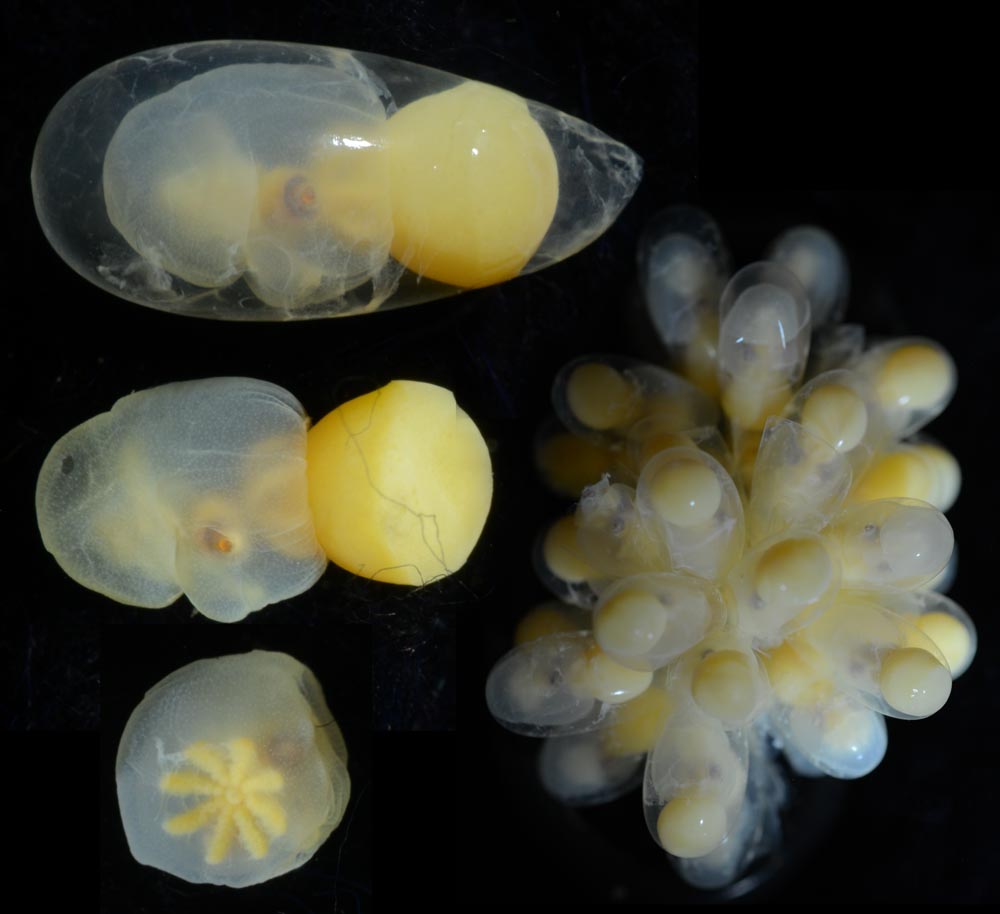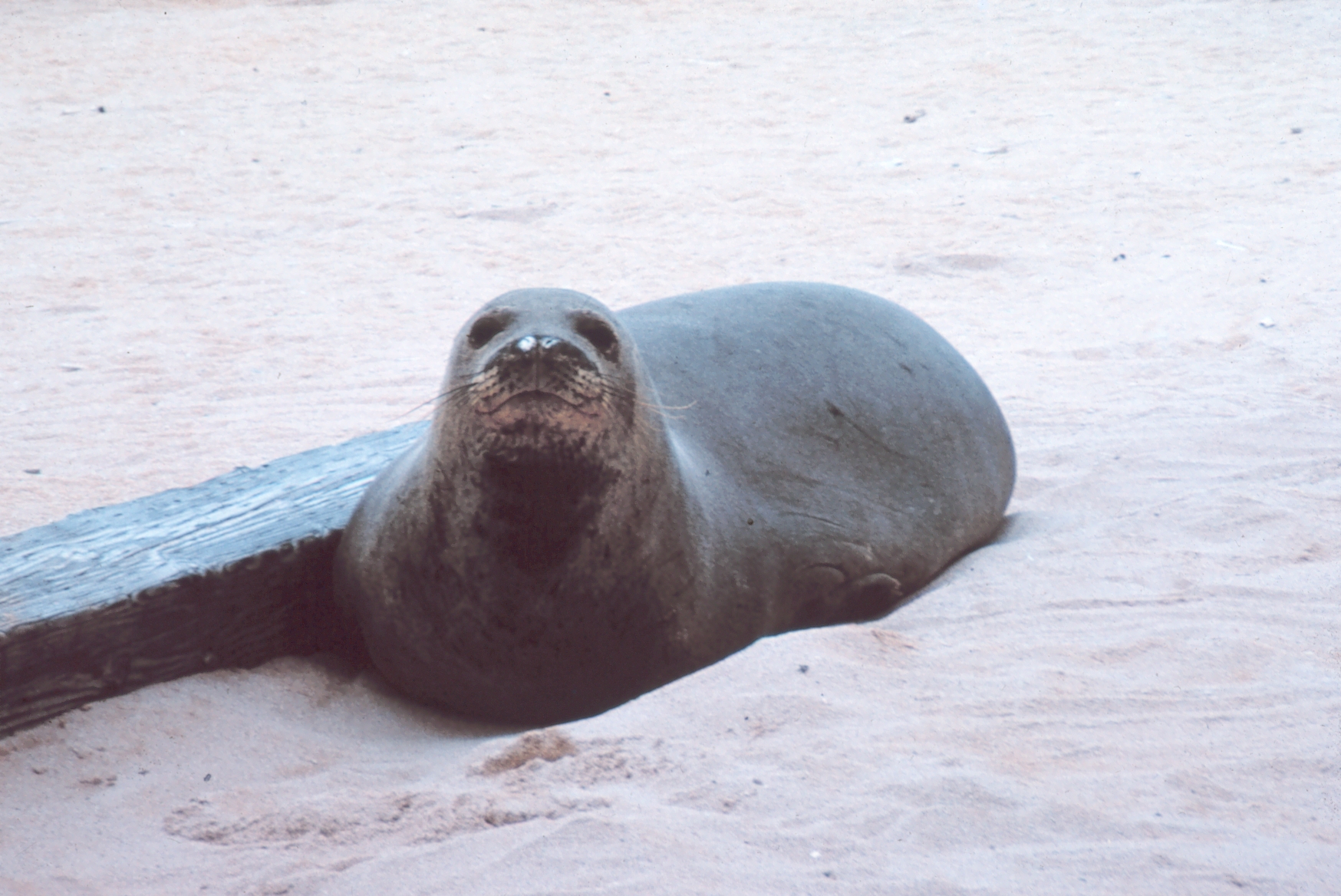|
Haliphron
The seven-arm octopus (''Haliphron atlanticus'') is one of the two largest known species of octopus; based on scientific records, it has a maximum estimated total length of and mass of . The only other similarly large extant species is the giant Pacific octopus, ''Enteroctopus dofleini''. The genera ''Alloposina'' Grimpe, 1922, ''Alloposus'' Verrill, 1880 and ''Heptopus'' Joubin, 1929 are junior synonyms of ''Haliphron'', a monotypic genus in the monotypic family Alloposidae, part of the superfamily Argonautoidea in the suborder Incirrata of the order Octopoda. Description The seven-arm octopus is so named because in males, the hectocotylus (a specially modified arm used in egg fertilization) is coiled in a sac beneath the right eye. Due to this species' thick, gelatinous tissue, the arm is easily overlooked, giving the appearance of just seven arms. However, like other octopuses, it actually has eight. Distribution The type specimen of ''H. atlanticus'' was collected in th ... [...More Info...] [...Related Items...] OR: [Wikipedia] [Google] [Baidu] |
Cephalopod Size
Cephalopods vary enormously in size. The smallest are only about long and weigh less than at maturity, while the largest—the giant and colossal squids—can exceed in length and weigh close to half a tonne (), making them the largest living invertebrates. Living species range in mass more than three-billion-fold, or across nine orders of magnitude, from the lightest hatchlings to the heaviest adults. Certain cephalopod species are also noted for having individual body parts of exceptional size. The giant and colossal squids, for example, have the largest known eyes among living animals. Nilsson ''et al.'', 2012:683 Cephalopods were at one time the largest of all organisms on Earth, and numerous species of comparable size to the largest present day squids are known from the fossil record, including enormous examples of ammonoids, belemnoids, nautiloids, orthoceratoids, teuthids, and vampyromorphids. In terms of mass, the largest of all known cephalopods were likely th ... [...More Info...] [...Related Items...] OR: [Wikipedia] [Google] [Baidu] |
Octopus
An octopus ( : octopuses or octopodes, see below for variants) is a soft-bodied, eight- limbed mollusc of the order Octopoda (, ). The order consists of some 300 species and is grouped within the class Cephalopoda with squids, cuttlefish, and nautiloids. Like other cephalopods, an octopus is bilaterally symmetric with two eyes and a beaked mouth at the center point of the eight limbs. The soft body can radically alter its shape, enabling octopuses to squeeze through small gaps. They trail their eight appendages behind them as they swim. The siphon is used both for respiration and for locomotion, by expelling a jet of water. Octopuses have a complex nervous system and excellent sight, and are among the most intelligent and behaviourally diverse of all invertebrates. Octopuses inhabit various regions of the ocean, including coral reefs, pelagic waters, and the seabed; some live in the intertidal zone and others at abyssal depths. Most species grow quickly, mature earl ... [...More Info...] [...Related Items...] OR: [Wikipedia] [Google] [Baidu] |
Enteroctopus Dofleini
The giant Pacific octopus (''Enteroctopus dofleini''), also known as the North Pacific giant octopus, is a large marine cephalopod belonging to the genus ''Enteroctopus''. Its spatial distribution includes the coastal North Pacific, along Mexico (Baja California), The United States (California, Oregon, Washington, and Alaska), Canada (British Columbia), Russia, Eastern China, Japan, and the Korean Peninsula. It can be found from the intertidal zone down to , and is best adapted to cold, oxygen-rich water. It is the largest octopus species, based on a scientific record of a individual weighed live. Etymology The specific name ''dofleini'' was chosen by Gerhard Wülker in honor of German scientist Franz Theodor Doflein. It was moved to genus ''Enteroctopus'' by Eric Hochberg in 1998. Description Size ''E. dofleini'' is distinguished from other species by its large size. Adults usually weigh around , with an arm span up to . [...More Info...] [...Related Items...] OR: [Wikipedia] [Google] [Baidu] |
Hectocotylus
A hectocotylus (plural: ''hectocotyli'') is one of the arms of male cephalopod A cephalopod is any member of the molluscan class Cephalopoda ( Greek plural , ; "head-feet") such as a squid, octopus, cuttlefish, or nautilus. These exclusively marine animals are characterized by bilateral body symmetry, a prominent head, ...s that is specialized to store and transfer spermatophores to the female. Structurally, hectocotyli are muscular hydrostats. Depending on the species, the male may use it merely as a conduit to the female, analogously to a penis in other animals, or he may Autotomy, wrench it off and present it to the female. The hectocotyl arm was first described in Aristotle's biology, Aristotle's biological works. Although Aristotle knew of its use in mating, he was doubtful that a tentacle could deliver sperm. The name ''hectocotylus'' was devised by Georges Cuvier, who first found one embedded in the mantle of a female Argonaut (animal), argonaut. Supposing it to be ... [...More Info...] [...Related Items...] OR: [Wikipedia] [Google] [Baidu] |
Argonautoidea
Argonautoidea is a superfamily of the suborder Incirrata containing all known argonautoids. Classification *Class Cephalopoda **Subclass Nautiloidea: nautiluses **Subclass †Ammonoidea: ammonites **Subclass Coleoidea ***Superorder Decapodiformes: squid, cuttlefish ***Superorder Octopodiformes ****Family † Trachyteuthididae (''incertae sedis'') ****Order Vampyromorphida: vampire squid ****Order Octopoda *****Genus †'' Keuppia'' (''incertae sedis'') *****Genus †''Palaeoctopus'' (''incertae sedis'') *****Genus †'' Paleocirroteuthis'' (''incertae sedis'') *****Genus †'' Proteroctopus'' (''incertae sedis'') *****Genus †'' Styletoctopus'' (''incertae sedis'') *****Suborder Cirrina: finned deep-sea octopuses *****Suborder Incirrata ******Superfamily Argonautoidea *******Family Alloposidae: the seven-arm octopus *******Family Argonautidae: argonauts (paper nautiluses) *******Family Ocythoidae: the tuberculate pelagic octopus *******Family Tremoctopodidae: blanket octop ... [...More Info...] [...Related Items...] OR: [Wikipedia] [Google] [Baidu] |
Extant Species
Neontology is a part of biology that, in contrast to paleontology, deals with living (or, more generally, ''recent'') organisms. It is the study of extant taxa (singular: extant taxon): taxa (such as species, genera and families) with members still alive, as opposed to (all) being extinct. For example: * The moose (''Alces alces'') is an extant species, and the dodo (''Raphus cucullatus'') is an extinct species. * In the group of molluscs known as the cephalopods, there were approximately 600 extant species and 7,500 extinct species. A taxon can be classified as extinct if it is broadly agreed or certified that no members of the group are still alive. Conversely, an extinct taxon can be reclassified as extant if there are new discoveries of living species (" Lazarus species"), or if previously-known extant species are reclassified as members of the taxon. Most biologists, zoologists, and botanists are in practice neontologists, and the term neontologist is used larg ... [...More Info...] [...Related Items...] OR: [Wikipedia] [Google] [Baidu] |
University Of Copenhagen Zoological Museum
The Copenhagen Zoological Museum ( Danish: ''Zoologisk Museum'') is a part of the Natural History Museum of Denmark, which is affiliated with the University of Copenhagen. History The Zoological Museum It is among the world's oldest natural history museums, as its collection was started by Ole Worm more than 350 years ago, although it was officially founded in 1862. Collections The zoological collections contain some 10 million specimens representing an estimated 10 % of described multicellular animal species. The history of the collections reach back in time more than 200 years. Apart from rich collections of Danish animals, the museum has strong representation of: * The North Atlantic and Arctic (especially Greenland) * The former Danish colonies in the West Indies * East Africa (especially the Eastern Arc mountains) * South American insects (especially butterflies) * Philippines, Bismarck and Solomon Islands * Deep Sea faunas * Whale skeletons * Material from several expe ... [...More Info...] [...Related Items...] OR: [Wikipedia] [Google] [Baidu] |
Mantle Length
The mantle (also known by the Latin word pallium meaning mantle, robe or cloak, adjective pallial) is a significant part of the anatomy of molluscs: it is the dorsal body wall which covers the visceral mass and usually protrudes in the form of flaps well beyond the visceral mass itself. In many species of molluscs the epidermis of the mantle secretes calcium carbonate and conchiolin, and creates a shell. In sea slugs there is a progressive loss of the shell and the mantle becomes the dorsal surface of the animal. The words mantle and pallium both originally meant cloak or cape, see mantle (vesture). This anatomical structure in molluscs often resembles a cloak because in many groups the edges of the mantle, usually referred to as the ''mantle margin'', extend far beyond the main part of the body, forming flaps, double-layered structures which have been adapted for many different uses, including for example, the siphon. Mantle cavity The ''mantle cavity'' is a central fe ... [...More Info...] [...Related Items...] OR: [Wikipedia] [Google] [Baidu] |
Swordfish
Swordfish (''Xiphias gladius''), also known as broadbills in some countries, are large, highly migratory predatory fish characterized by a long, flat, pointed bill. They are a popular sport fish of the billfish category, though elusive. Swordfish are elongated, round-bodied, and lose all teeth and scales by adulthood. These fish are found widely in tropical and temperate parts of the Atlantic, Pacific, and Indian Oceans, and can typically be found from near the surface to a depth of , and exceptionally up to depths of 2,234 m. They commonly reach in length, and the maximum reported is in length and in weight.Gardieff, S. Swordfish.' Florida Museum of Natural History. Accessed 26 December 2011 They are the sole member of their family, Xiphiidae. Taxonomy and etymology The swordfish is named after its long pointed, flat bill, which resembles a sword. The species name, ''Xiphias gladius'', derives from Greek (''xiphias'', "swordfish"), itself from (''xiphos'', "sword") and ... [...More Info...] [...Related Items...] OR: [Wikipedia] [Google] [Baidu] |
Sperm Whale
The sperm whale or cachalot (''Physeter macrocephalus'') is the largest of the toothed whales and the largest toothed predator. It is the only living member of the genus '' Physeter'' and one of three extant species in the sperm whale family, along with the pygmy sperm whale and dwarf sperm whale of the genus ''Kogia''. The sperm whale is a pelagic mammal with a worldwide range, and will migrate seasonally for feeding and breeding. Females and young males live together in groups, while mature males (bulls) live solitary lives outside of the mating season. The females cooperate to protect and nurse their young. Females give birth every four to twenty years, and care for the calves for more than a decade. A mature sperm whale has few natural predators, although calves and weakened adults are sometimes killed by pods of killer whales (orcas). Mature males average in length, with the head representing up to one-third of the animal's length. Plunging to , it is the third d ... [...More Info...] [...Related Items...] OR: [Wikipedia] [Google] [Baidu] |
Hawaiian Monk Seal
The Hawaiian monk seal (''Neomonachus schauinslandi'') is an endangered species of earless seal in the family Phocidae that is endemic to the Hawaiian Islands. The Hawaiian monk seal is one of two extant monk seal species; the other is the Mediterranean monk seal. A third species, the Caribbean monk seal, is extinct. The Hawaiian monk seal is the only seal native to Hawaii, and, along with the Hawaiian hoary bat, is one of only two mammals endemic to the islands. ''N. schauinslandi'' is a conservation reliant endangered species. The small population of about 1,400 individuals is threatened by human encroachment, very low levels of genetic variation, entanglement in fishing nets, marine debris, disease, and past commercial hunting for skins. There are many methods of conservation biology when it comes to endangered species; translocation, captive care, habitat cleanup, and educating the public about the Hawaiian monk seal are some of the methods that can be employed. ... [...More Info...] [...Related Items...] OR: [Wikipedia] [Google] [Baidu] |







